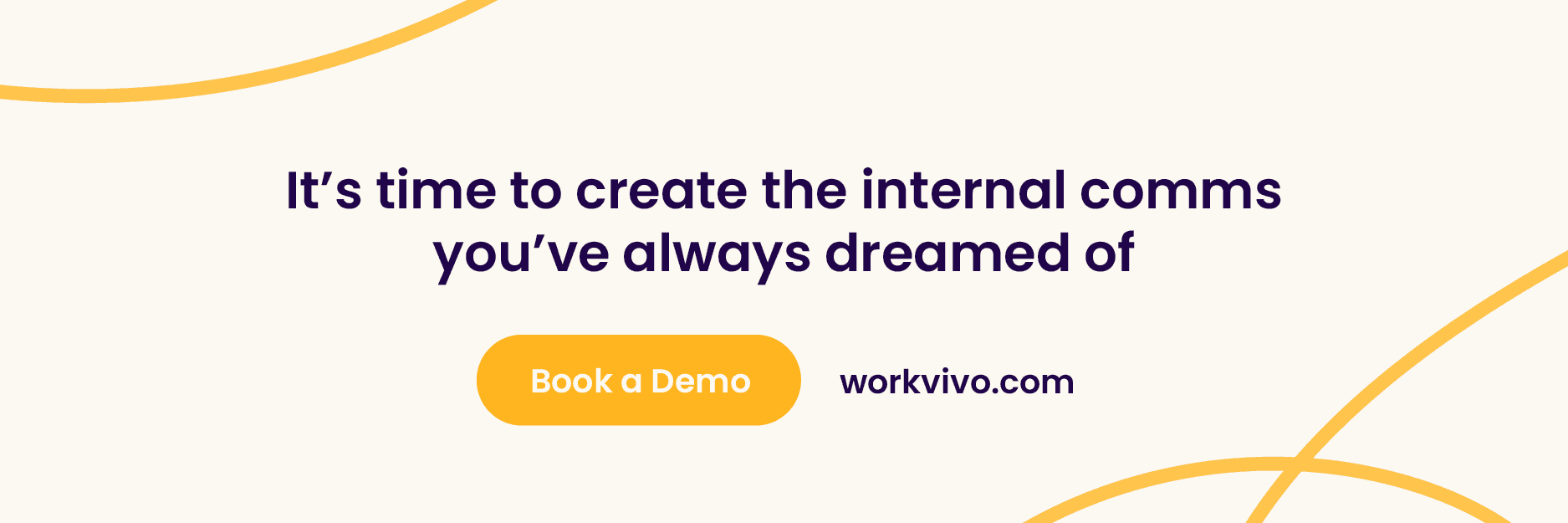Join us for The Frontline Summit '25 – shaping the future of frontline work. June 4th | 3pm GMT+1 / 10am EST
Important Things I’ve Learned About Communicating With Frontline Workers

Caitlin Kirwan
External Contributor - Internal Comms & Engagement Expert
June 7 2023

“Wait… you mean, every single employee has a company email account and can access the intranet whenever they want?!”
That was me, in the summer of 2017, feeling puzzled and looking a bit stupid in front of my new boss.
I was just starting my first internal comms manager role within a company that had 100% desk-based employees. I’d already managed internal communications for a number of years at this stage, but always within organizations that had a mix of online and offline employees.
Up to that point, thinking about the best ways to adapt my communication approaches to reach and engage frontline workers had been a daily task of mine.
I’ve come a long way since that day in 2017 – learning communication techniques and strategies that best suit different internal audiences, experimenting with all manner of channels, supporting global colleagues across multiple cultures and timezones, and leading internal comms through the COVID-19 pandemic. But the years I spent managing internal comms for remote offline workers were some of the most rewarding and fulfilling of my entire career.
So I wanted to pause, rewind, and reflect on the most important things I learned about communicating with frontline workers.
Let’s jump in!
So, what are we working with?
80% of the world’s workforce is now estimated to be deskless, particularly in sectors such as retail, manufacturing, hospitality, construction, and healthcare.
Frontline workers do not have access to the same variety of communication channels and collaboration tools as their desk-based colleagues, which poses a challenge in reaching and engaging them effectively. They often have a number of things in common:
- Work differing shift patterns
- Often work between multiple locations
- Unlikely to have regular access to a work inbox
- Feel less seen than their desk-based counterparts
The most recent Deskless Report from Axonify highlighted some interesting insights from frontline workers:
- Only 35% think the communication they receive is effective
- Only 39% feel heard, down 34% from 2021
- 61% prefer communications to come from their direct manager
- 37% feel that fractured communication creates challenges in their day-to-day work
With the scene now set, let’s move into my top learnings for effectively communicating with deskless employees.
1. Be respectful of frontline workers’ time
This is an important one for me to start with, and I’m going straight for the jugular.
We need to stop asking frontline workers to give up their breaks for team meetings and communication time.
I am appalled by how common this is. I’ve heard countless Operations Directors explaining calmly that team briefings and leader touch-points must take place during employee breaks to avoid negatively impacting operations.
I understand that there are targets to meet and margins to maintain. But telling employees that they must sacrifice their rest periods to receive company communications is a guaranteed way to make them feel undervalued and disrespected. Aside from demeaning the importance of the messaging, it demonstrates that leaders do not believe it’s important to share company updates with frontline workers. This has to change.
Stand your ground, IC pros.
Explain to your Operations Director that 15 minutes of non-productive time each week dedicated to communications will actually boost productivity in the long term. This time might include ‘Team Talk’ discussions, time to watch an internal update video, or to catch up on an abridged Town Hall recording. Help leaders understand the impact of employee engagement on motivation and productivity, and explain how effective communication is a crucial driver of engagement.
I believe in you.
And if you’re asking for employees to be given scheduled time each week for communication updates, you need to ensure you keep messaging short, to the point, and relevant. Deskless employees simply don’t have the opportunity to consume or long-form messaging that is too in-depth.
60% of frontline workers who contributed to the 2023 Deskless Report said having short, easy-to-read copy would make their company communications more helpful.
2. Team leaders are key to internal comms success
Line managers are always one of the most important keys to successful internal communication, but never more so than when considering frontline worker comms.
61% of frontline workers said they find company communication most useful when it comes from their direct manager. As internal communications professionals, it’s our job to enable and empower team leaders to communicate effectively. And clearly, there is some work to do here, as only 51% of frontline workers said they felt in the know about what’s going on in their organization compared to 70% of direct managers.
Supporting team leaders to provide consistent, aligned updates will build a sense of community and help show frontline workers how their work fits into the bigger picture of the organization. Leader updates should be short and punchy but also leave room for team discussion and input. A communication platform like Workvivo can be an incredibly useful resource for managers to direct employees to more detailed information on a particular topic and follow-up updates.
Three easy ways for IC teams to support team leader communication:
- Create weekly briefing packs that summarize important updates and news for team leaders to cascade, including discussion prompts and the opportunity for leaders to share back employee comments
- Build a functional ‘Leader Hub’ on your intranet where team leaders can easily access and download helpful resources, templates, and updates
- Take a multi-channel approach and consider reinforcing verbal updates with a short podcast or video, which leaders can share with frontline workers and use to cover different shifts.
3. Make digital signage your BFF
I know, I know. Notice boards feel a bit…1996. But I genuinely believe that physical signage still has a huge role to play in frontline worker communications.
Back in 2012, one of my first-ever internal communication responsibilities was to trek around BMW’s huge manufacturing facility in Oxford, the home of MINI, each month with armfuls of posters. It would take me the entire day to update the notice boards across each building. We had more than 3,500 employees working at MINI Plant Oxford, and the notice boards were an important part of our internal communication strategy.
Thank goodness that digital signage is now much more common than old-school notice boards!
Digital signage definitely needs to become your BFF for frontline worker communications. It offers an engaging and visual way to connect deskless teams and share important real-time updates while employees continue going about their daily work.
Workvivo’s digital signage solution, Workvivo TV, allows you to instantly broadcast updates, news, and events to the entire workforce, regardless of location or shift. It’s fully inclusive and ensures nobody feels left behind by offering the functionality to share global communications in multiple different languages.
There’s also the opportunity to use digital signage to drive mobile adoption by sharing QR codes to promote competitions, surveys, or app downloads.
I hope you’ve found this blog useful!
Every organization is different, but I’ve found that these core themes have cropped up consistently over the years as I’ve worked to connect and engage frontline workers.
By Caitlin Kirwan
Caitlin Kirwan is a communication and engagement professional with over 10 years of experience leading internal communications. Since launching her career with BMW in 2012, she has managed national and global internal comms and engagement programs across multiple sectors for organizations including Deloitte, PayPal, and DAS.
